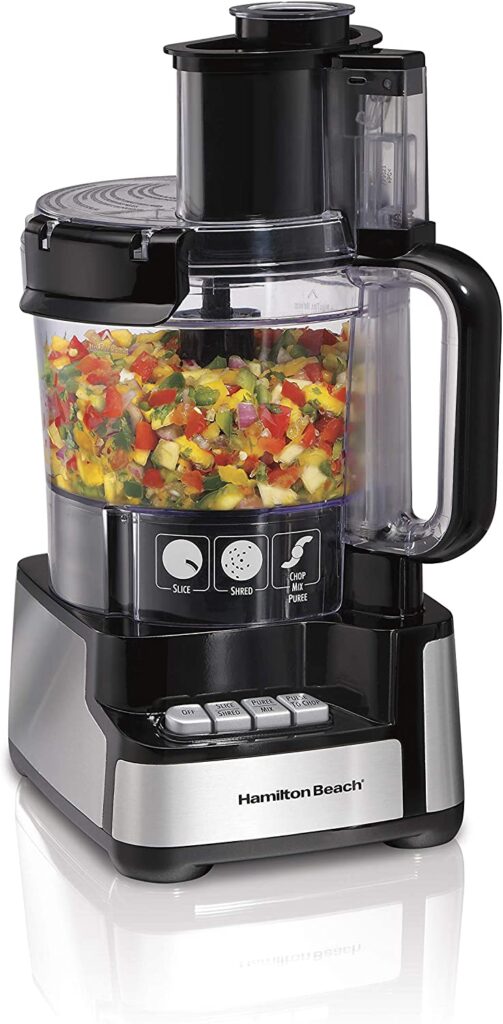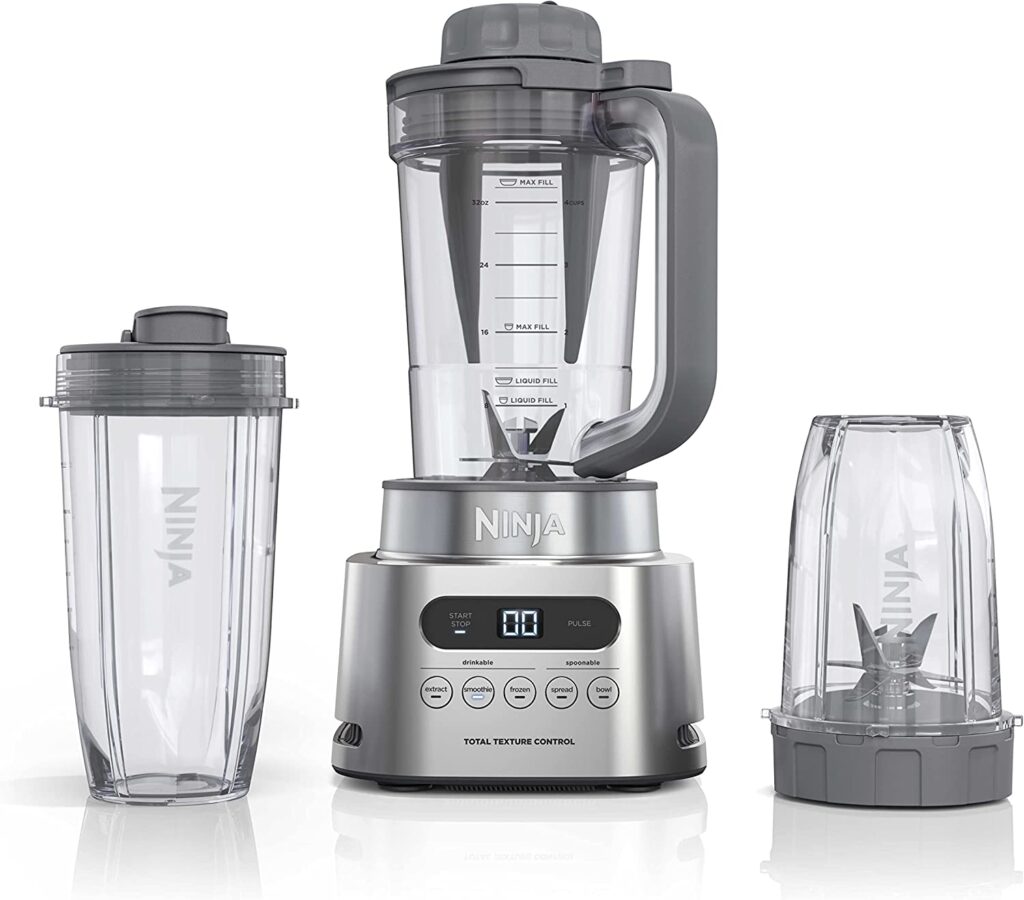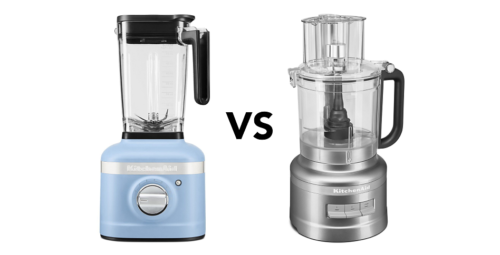Can You Use a Blender as A Food Processor?
Would you like to know whether you can use a blender as a food processor? You don’t have to worry anymore because this guide has the right and accurate answer to this question. It is a confusing question because both appliances have the ability to blend, chop and puree ingredients. It is also important to know that there are some differences between them that make them suitable for different tasks.
Yes, you can use a blender as a food processor. A blender can carry out operations such as blending, chopping and pureeing ingredients which are similar tasks carried out by a food processor. The biggest challenge is that there are some operations in a blender that may not be as effective as a food processor. A good example is mixing, emulsifying and more.

Related Article: Can You Use a Blender as A Food Processor?
Difference between food processor and blender. “Blenders vs food processors”.
A blender and a food processor have similar functionalities, though there is a small difference that separates the 2.
The following are the differences between a food processor and a blender:
- Blade design – The blade design of a food processor is large and shaper compared to the ones of a blender and is well constructed to chop the ingredients precisely. On the other hand, the blades of a blender are designed to pull ingredients at the bottom of the pitcher container making them perfect for creating liquids.
- Capacity – Food processors are larger in size while blenders are smaller. This means that food processors can carry large batch operations than blenders.
- Texture – Food processors produce a wide variety of textures, this is from coarse to fine textures. On the other hand, blenders are suitable for preparing purees and smoothies.
- Functionality – Food processors are equipped with different blades and attachments that are able to carry out different tasks such as slicing, shredding, blending, chopping and more. Blenders on the other hand are limited to blending operations, though some high blenders are equipped with attachments like food processor bowls or single-serve cups. These features and more allow them to function as a food processor.
- Power – Food processors are equipped powerful motors than blenders. This allows them to blend tougher ingredients such as nuts compared to blenders.
- Ease of use – Blenders are very easy to operate and maintain because they have fewer assembly components. A food processor, on the other hand, is a bit complex or difficult because they are built with several parts such as blades, settings and even attachments.
- Cleaning – Blenders are easier to clean because they have fewer parts while the food processor is a bit complex due to the various parts it’s equipped with.
- Price – The cost of purchasing a food processor is higher than a blender.
Pros and Cons of Using a Blender as a Food Processor.
Let’s look at the advantages and disadvantages of using a blender as a food processor:
PROS
- Blenders are versatile and can carry out a wide range of operations such as pureeing, chopping and also grinding.
- A blender is more convenient because you don’t have to use different attachments and
- They are also small in size thereby saving kitchen counter space.
- The cost of purchasing a blender is affordable.
- Blenders are easy to clean because most of them come with dishwasher-safe parts.
- Blenders are very portable due to their small size.
CONS
- A blender has limited functionalities.
- A blender may produce inconsistent results when it comes to chopping or pureeing solid ingredients. You will have to stop the blender at intervals to scrape the sides of that pitcher to ensure all ingredients are well processed.
- It is difficult to control textures from a blender because they are able to create a smooth texture. They are unable to produce a coarse texture.
- Most blenders have limited capacities, which makes them unable to carry out large batch operations.
- Limited capacity: While some blenders have large capacities, they may not be as large as a food processor, which means you may need

When to use a blender as a food processor?
A blender can be used in place of a food processor depending on the type of recipe as well as the ingredients that you use.
The following are situations whereby you can use a blender instead of a food processor:
- Pureeing – A blender is perfect for pureeing ingredients like soup, smoothies and sauces.
- Grinding – A blender can also be used in grinding operations like coffee beans, nuts spices to fine textures.
- Liquids – Blending or mixing liquids is a great task for a blender.
- Soft ingredient – A blender is suitable for chopping and blending soft ingredients. Though there are some that can carry out thought operations like blending frozen fruits and more.
- Smoothies – This is the main function of a blender.
Related Article: Does ice sharpen blender blades?
Tips for using a blender as a food processor?
- Use the pulse function: Using the pulse function prevents over-processing or uneven textures when chopping or grinding.
- Start with small quantities: When carrying out operations, start with small quantities and add as you continue. This will allow you to achieve consistent results since a blender can not handle large batch operations at once.
- Use a tamper: A tamper tool helps you push ingredients down into the blades for more efficient and convenient processing. This is useful when creating thick textures such as hummus and more.
- Add liquid: A liquid acts as a lubricant when blending or processing ingredients. This does not mean you put excess liquid since it will affect the flavor of your recipe.
- Secure the lid: Closing the lead will prevent splatters caused by the spinning of the blades.
- Overloading: Blenders are not meant for the heavy-duty task since they can overload or work. For this reason, have short breaks in between the operations.
How does a blender work?
The following are ways in which a blender functions:
- Motor: The motor of a blender starts to pin at high speeds when you switch on the blender. The motor is located at the base of the container, some have an extended shaft that passes at the center of the container.
- Blades: The blades of a blender are made of stainless steel and are also well designed to create a vortex force that pulls the ingredients towards the blades. Some blenders are equipped with removable and interchangeable blades that allow you to carry out different operations.
- Pitcher: Also called container is constructed from plastic glass, some have stainless steel. This is the place where the processing of ingredients takes place.
- Controls: Blenders are equipped with controls that help you adjust the motor speed depending on the operation you are carrying out. Advanced blenders have pre-programmed setting such as smoothies, puree and more.
- Lid: This is a cover that prevents ingredients from spilling out of the pitcher container.

Functions of a food processor
Here are some of the functions of a food processor:
- Chopping – A food processor can chop ingredients easily.
- Slicing – Food processors can also slice ingredients such as vegetables, fruits, cheese and more.
- Shredding – You can also shred using a food processor such as cooked meat and more.
- Mixing – A food processor has the ability to mix ingredients together such as dough for bread, pizza and more.
- Pureeing – Just like a blender, a food processor can be used to puree ingredients to smooth and consistent textures.
Related Article: Can you shred chicken with a food processor?
Conclusion “Can you use a blender as a food processor?”
In conclusion, a blender can carry out the tasks of a food processor but the end result may not be as effective or consistent as a food processor. A food processor has different blades that are suitable for specific tasks making end result very consistent.

